Thermal imaging technologies are continuously becoming more affordable and accessible to everyone. Today, a thermal camera can be bought for less than £150. Thermal imaging can be used maliciously to infer the user input on keyboards and touchscreens. For example, taking a thermal image of a keyboard after a user has interacted with it reveals recent input such as passwords, or sensitive messages.
In this project, we aim to:
- assess the viability of thermal attacks in everyday computer and mobile usage scenarios,
- develop and evaluate methods for resisting them on desktop and mobile settings, and
- raise awareness about this threat and possible countermeasures through impact activities.
This work has been funded by the Royal Society of Edinburgh (RSE Award number 65040), the EPSRC (grant number EP/V008870/1) and the PETRAS National Centre of Excellence for IoT Cybersecurity, which is also funded by the EPSRC (EP/S035362/1).
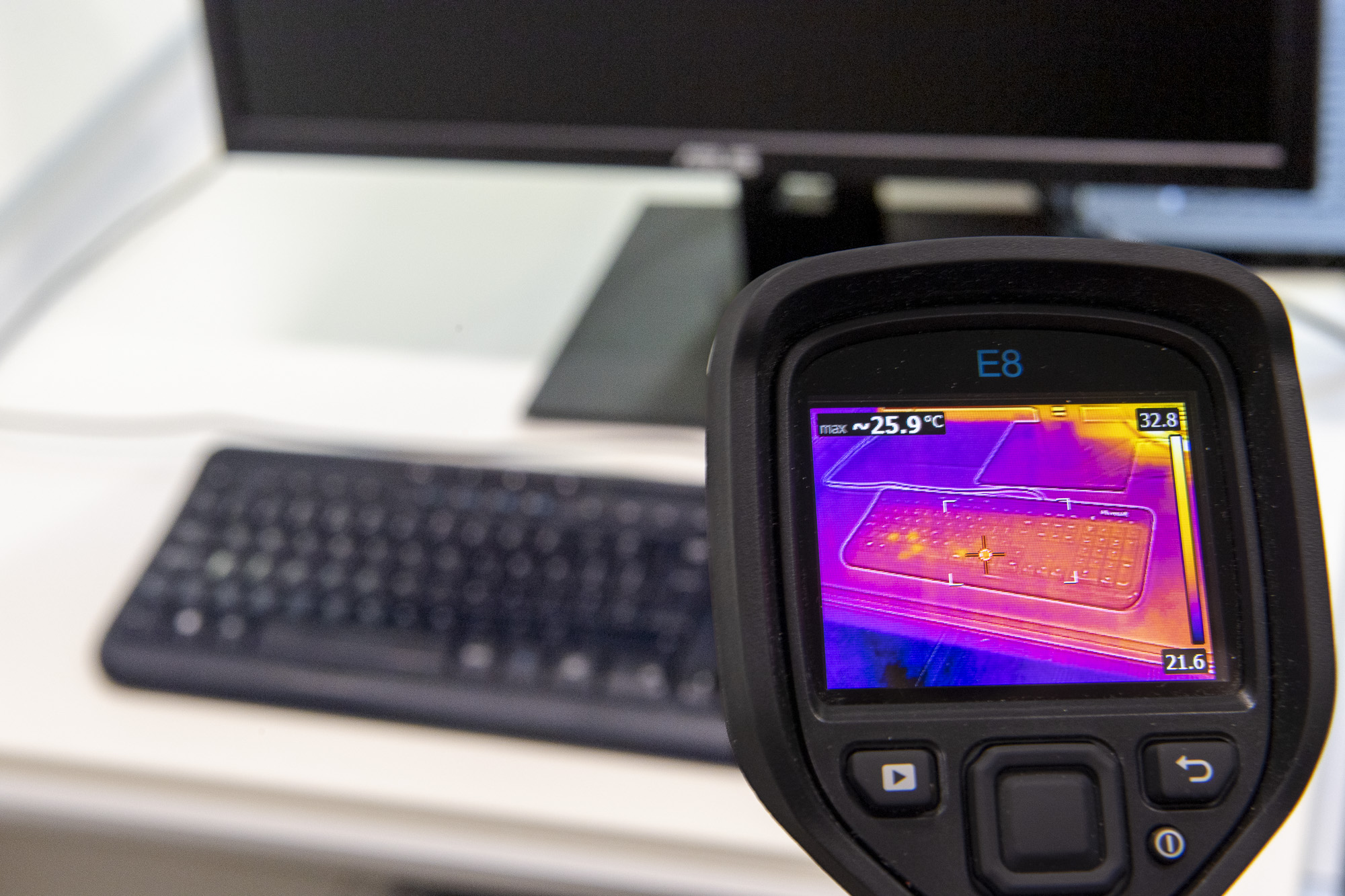
Research Team
- Dr Mohamed Khamis - Principal Investigator
- Dr John Williamson - Collaborator
- Dr Shaun Macdonald - Research Associate
- Dr Md Shafiqul Islam - Research Associate
- Prof Dr Karola Marky - Former Researcher Associate
- Miss Norah Mohsen Alotaibi - PhD Student
- Miss Habiba Farzand - Research Assistant
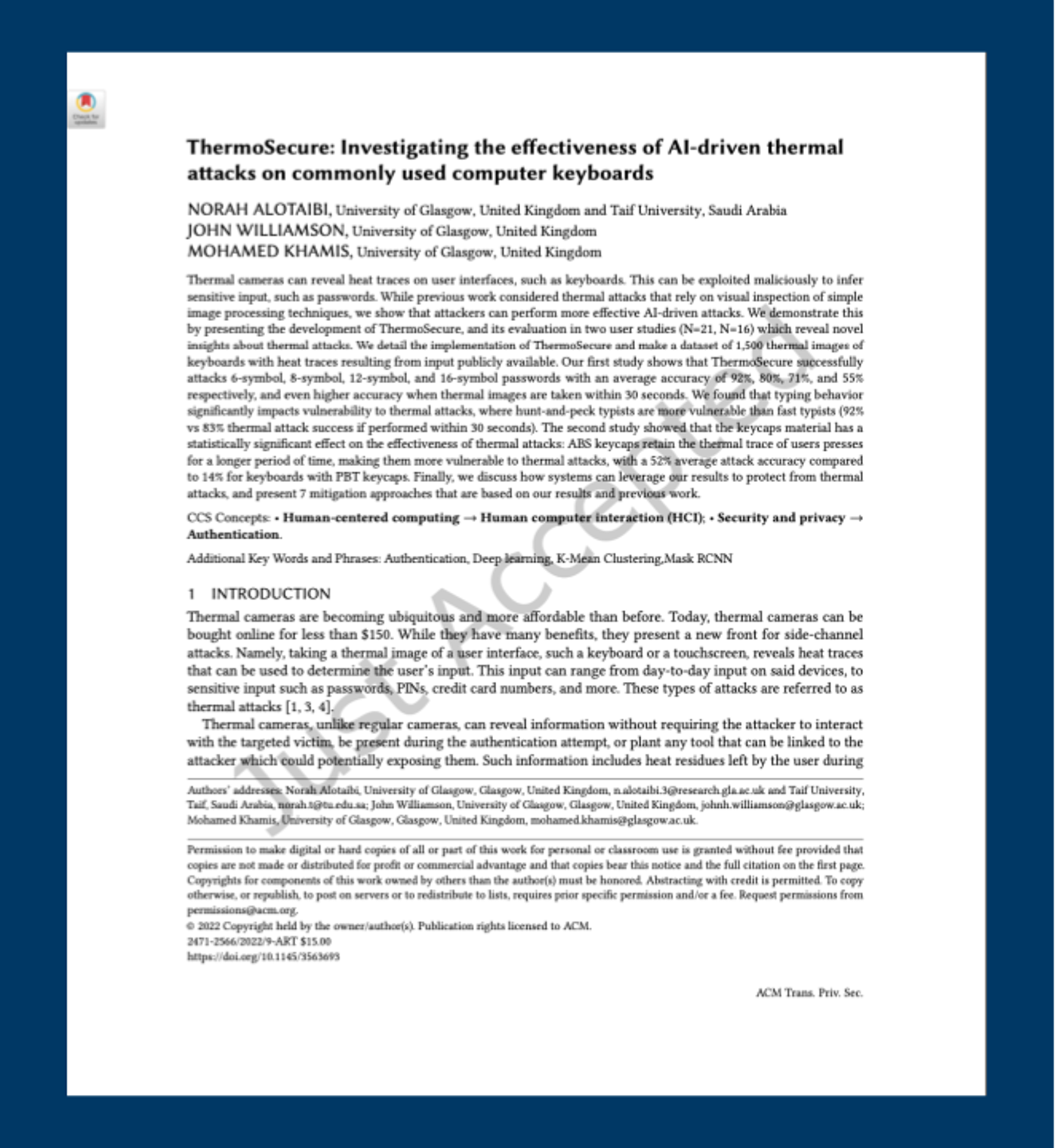
Publications
Our work on thermal attacks has been published at top HCI and Security Venues such as ACM TOPS, USENIX Security, and alike. Click here for more details.
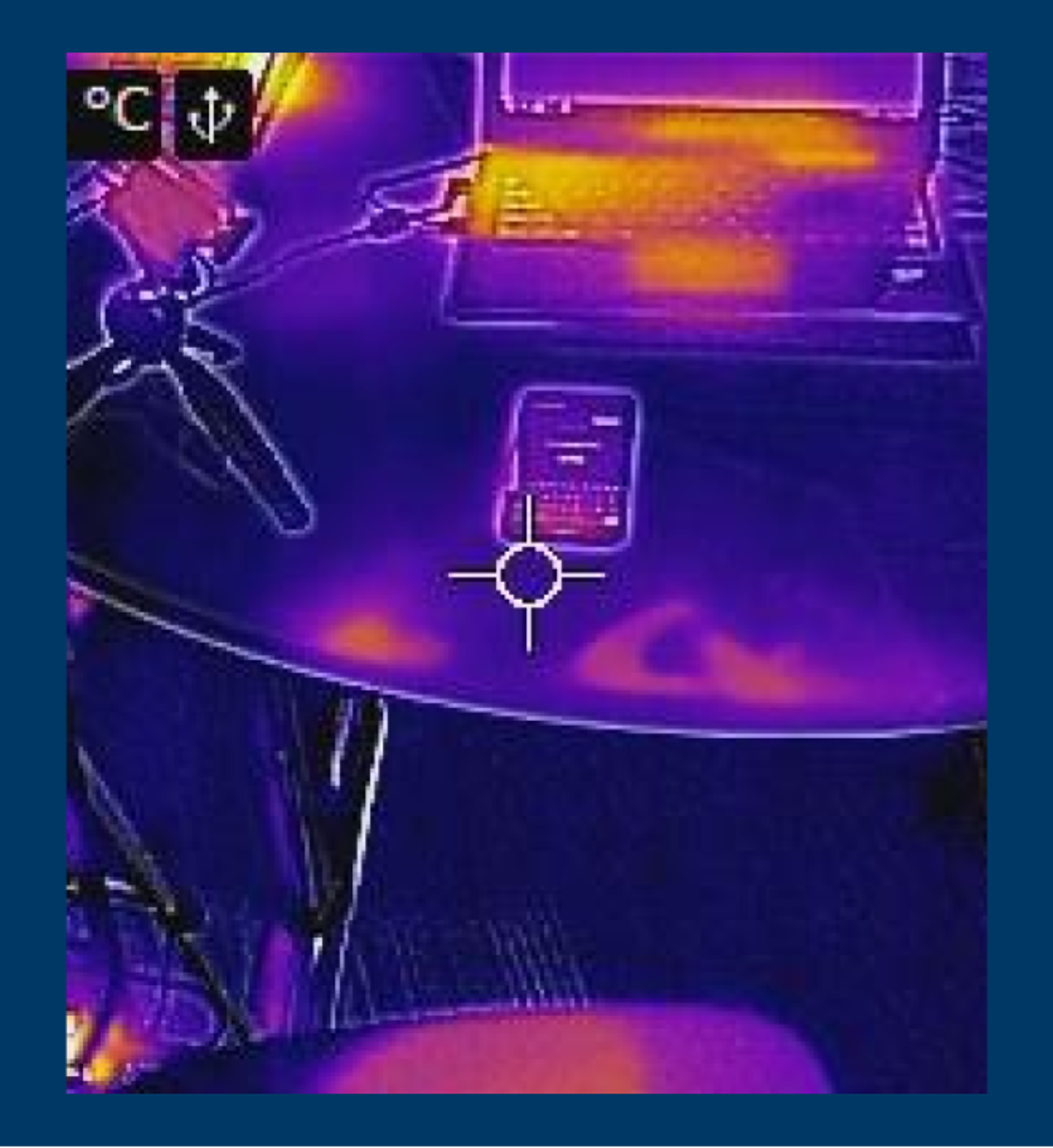
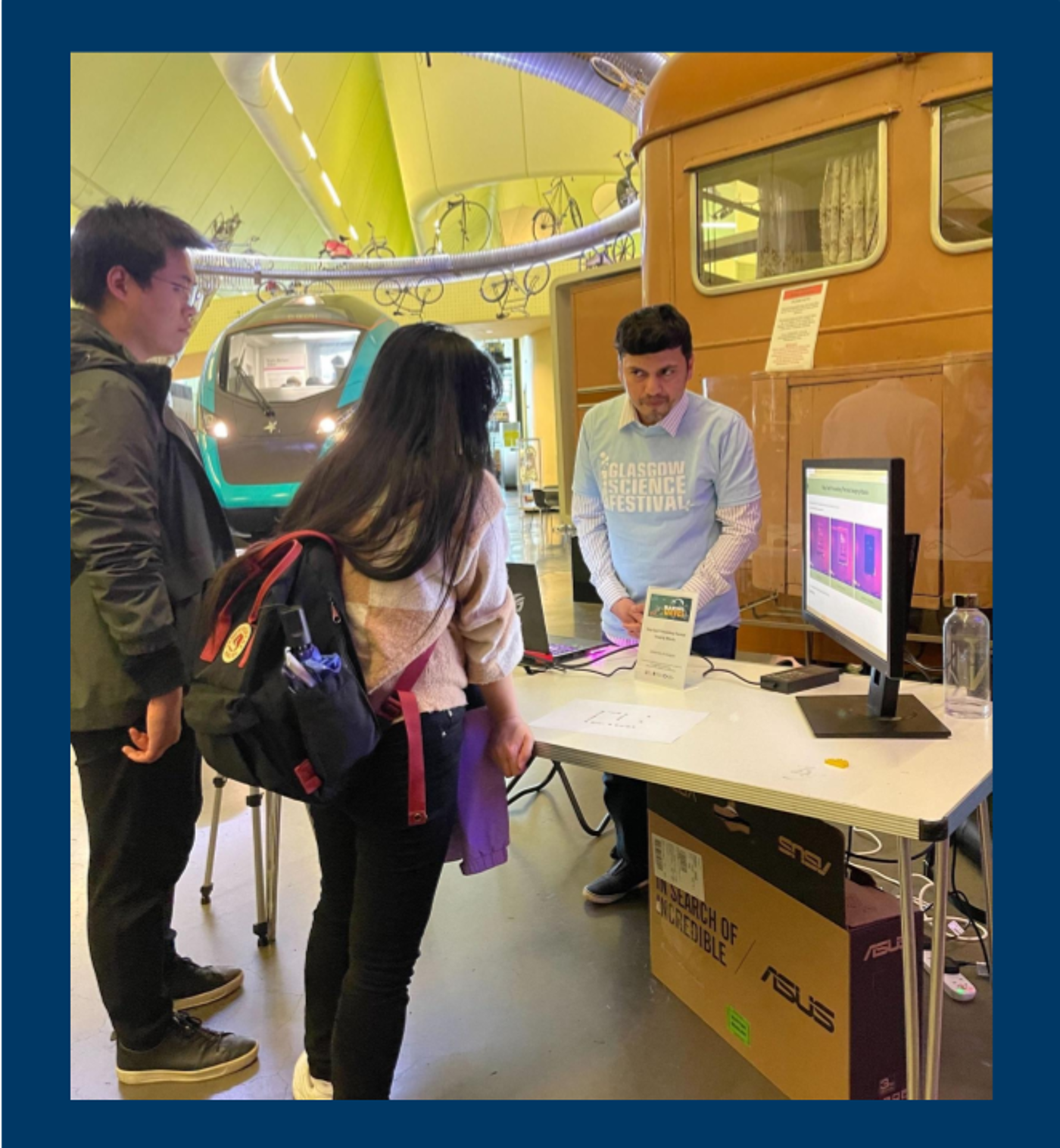
Public Engagement
Our work has been showcased at various events. Click here for more details.

Media Coverage
Our recent work has received significant coverage in 467 online and print articles from 22 counties across 3 continents and in 13 languages. A full episode on the German Science TV show Galileo featured our work, and we were interviewed on BBC Radio. Click here for more details.
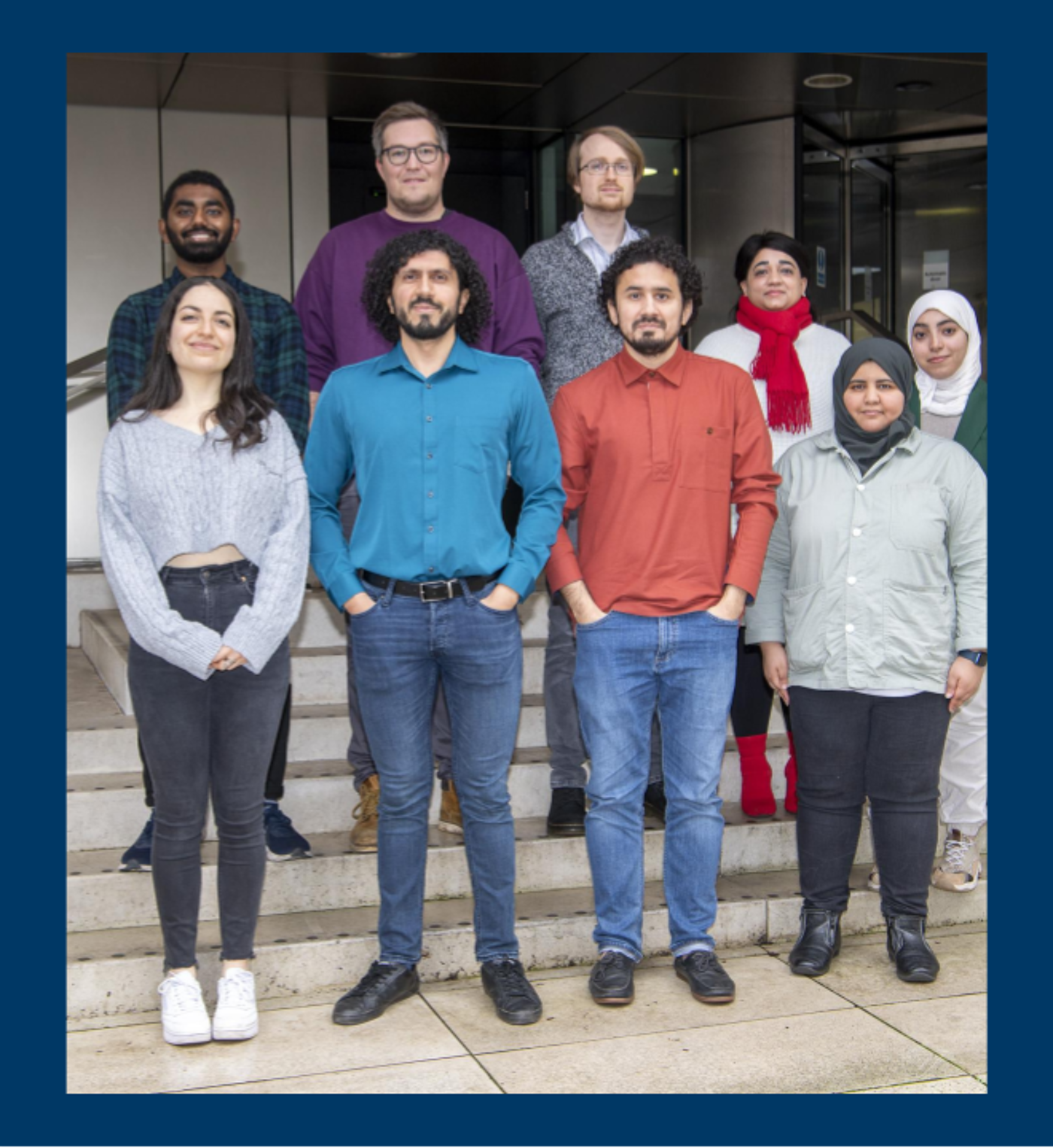
Our Research Lab
This project is part of the SIRIUS Research Lab. To learn more about our lab's work, please visit: https://mkhamis.github.io//mkhamis/


